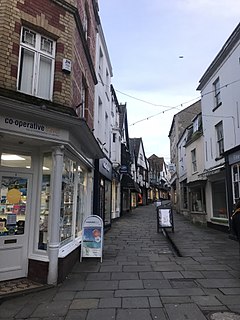The Auxiliary Units or GHQ Auxiliary Units were specially trained, highly secret units created by the United Kingdom government during the Second World War, with the aim of using irregular warfare to help combat any invasion of the United Kingdom by Nazi Germany, which the Germans codenamed Operation Sea Lion. With the advantage of having witnessed the rapid fall of several continental nations, the United Kingdom was the only country during the war that was able to create a multi-layered guerrilla in anticipation of an invasion. The Auxiliary Units would fight as uniformed guerrillas during the military campaign. In the event of an invasion, all Auxillary units would disappear into their operational bases; and would not maintain contact with local Home Guard commanders, who should indeed be wholly unaware of their existence. Hence, although the Auxiliaries were Home Guard volunteers and wore Home Guard uniforms, they would not participate in the conventional phase of their town's defence; but would be activated once the local Home Guard defence had been ended, to inflict maximum mayhem and disruption over a further, necessarily brief but violent, period. They were not envisaged as a continuing resistance force against long-term occupation.

Creech St Michael is a village and civil parish in Somerset, three miles east of Taunton in the Taunton Deane district. The parish straddles the M5 motorway and includes several scattered settlements. The village of Creech St Michael and the hamlets of Charlton, Creech Heathfield, and Ham lie east of the motorway. The hamlets of Adsborough, Coombe, Langaller, and Walford lie west of the motorway. The parish has a population of 2,416.
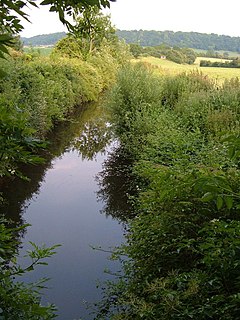
The Chard Canal was a 13.5 miles (21.7 km) tub boat canal in Somerset, England, that ran from the Bridgwater and Taunton Canal at Creech St. Michael, over four aqueducts, through three tunnels and four inclined planes to Chard. It was completed in 1842, was never commercially viable, and closed in 1868. The major engineering features are still clearly visible in the landscape.
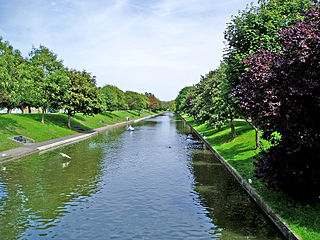
The Royal Military Canal is a canal running for 28 miles (45 km) between Seabrook near Folkestone and Cliff End near Hastings, following the old cliff line bordering Romney Marsh, which was constructed as a defence against the possible invasion of England during the Napoleonic Wars.
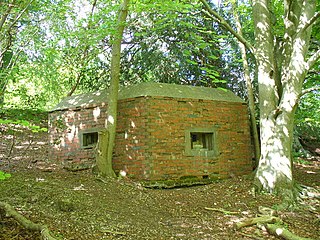
The Outer London Defence Ring was a defensive ring built around London during the early part of the Second World War. It was intended as a defence against a German invasion, and was part of a national network of similar "Stop Lines".

Avening is a village and civil parish in the Cotswold district of Gloucestershire, England, about three miles north of Tetbury. According to the 2001 census it had a population of 1,094, decreasing to 1,031 at the 2011 census. Nearby is Gatcombe Park, the home of the Princess Royal.

Dragon's teeth are square-pyramidal fortifications of reinforced concrete first used during the Second World War to impede the movement of tanks and mechanised infantry. The idea was to slow down and channel tanks into killing zones where they could easily be disposed of by anti-tank weapons.

The City of London Yeomanry was a yeomanry regiment of the British Territorial Army, formed in 1901. It amalgamated with the Inns of Court Regiment to form the Inns of Court & City Yeomanry in 1961. The lineage is maintained by 68 Signal Squadron, part of 71 (Yeomanry) Signal Regiment.

British anti-invasion preparations of the Second World War entailed a large-scale division of military and civilian mobilisation in response to the threat of invasion by German armed forces in 1940 and 1941. The British army needed to recover from the defeat of the British Expeditionary Force in France, and 1.5 million men were enrolled as part-time soldiers in the Home Guard. The rapid construction of field fortifications transformed much of the United Kingdom, especially southern England, into a prepared battlefield. The German invasion plan, Operation Sea Lion, was never taken beyond the preliminary assembly of forces. Today, little remains of Britain's anti-invasion preparations; only reinforced concrete structures such as pillboxes and anti-tank cubes are commonly found.

The Coquet Stop Line, which ran from Amble in Northumberland up the valley of the River Coquet, formed part of the defences constructed to meet the threat of a Nazi invasion during World War II. It was intended to slow the advance of the German army from the north to give time for a field army to assemble on the Tyne Stop Line around 30 miles to the south.

The Wellow Brook is a small river in Somerset, England.

The fortifications of London are extensive and mostly well maintained, though many of the City of London's fortifications and defences were dismantled in the 17th and 18th century. Many of those that remain are tourist attractions, most notably the Tower of London.
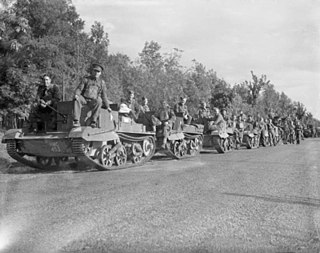
The British Expeditionary Force (BEF) was the name of the British Army in Western Europe during the Second World War from 2 September 1939 when the BEF GHQ was formed until 31 May 1940, when GHQ closed down. Military forces in Britain were under Home Forces command. During the 1930s, the British government planned to deter war by rearming from the very low level of readiness of the early 30s and abolished the Ten Year Rule. The bulk of the extra money went to the Royal Navy and the Royal Air Force but plans were made to re-equip a small number of Army and Territorial Army divisions for service overseas.

Admiralty scaffolding, also known as Obstacle Z.1 or sometimes simply given as beach scaffolding or anti-tank scaffolding, was a British design of anti-tank and anti-boat obstacle made of tubular steel. It was widely deployed on beaches of southern England, eastern England and the south western peninsula during the invasion crisis of 1940-1941. Scaffolding was also used, though more sparingly, inland.

Buoy is a British type of anti-tank obstacle used to block roads intended to impede enemy movement. Buoys were widely deployed during the invasion crisis of 1940–1941. Each buoy was a truncated cone of concrete with a rounded bottom, about 2 feet 9 inches (84 cm) high, and with a 2 inches (50 mm) diameter hole through the axis. They would be placed in at least five rows across a roadway.

A pillbox is a type of blockhouse, or concrete dug-in guard post, normally equipped with loopholes through which to fire weapons. It is in effect a trench firing step hardened to protect against small-arms fire and grenades and raised to improve the field of fire.
The Somerset Royal Horse Artillery was a Territorial Force Royal Horse Artillery battery that was formed in Somerset in 1908. It saw active service during the First World War in the Sinai and Palestine Campaign with the ANZAC Mounted Division from 1916 to 1918. A second line battery, 2/1st Somerset RHA, served on the Western Front with the 63rd Division from 1916 to 1918. It was disembodied after the end of the war and was not reconstituted in the Territorial Force in 1920.

